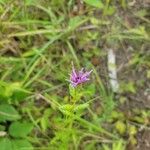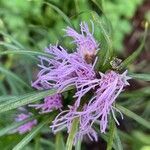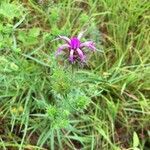Glabrous or hairy, 3–8 dm; lvs linear or a little broader, firm, those near the base 6–25 cm × 4–13 mm, often partly sheathing, or the very lowest often smaller and deciduous; heads mostly few or even solitary, on stiff, erect peduncles or sessile; invol 12–25(–30) mm, its bracts firm, with loose or squarrose, acuminate tip; fls 20–45 per head, or up to 60 in the terminal head; inner surface of the cor-lobes coarsely hairy; pappus evidently plumose; 2n=20. Dry, open places; Del. to S.D., s. to Fla. and Tex. July–Aug. Three vars. in our range.



